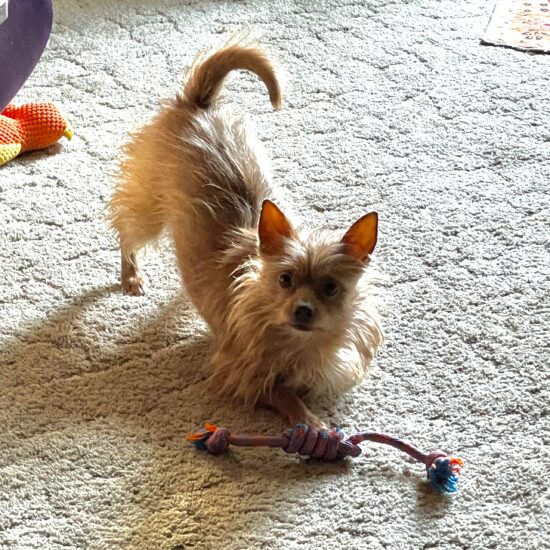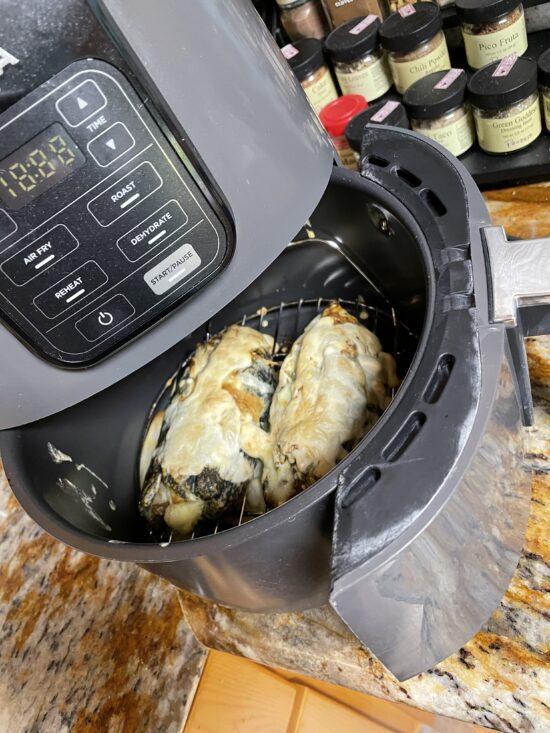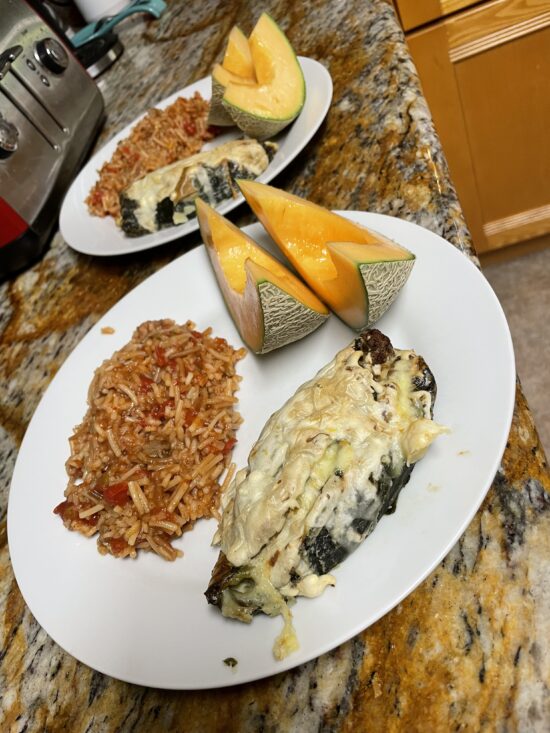I love all dogs. I’ve been blessed in my life to share a home with many of them, from the very gentle 80-plus-pound pittie Chiquita, the kindest and gentlest soul to walk the Earth, to the 5 pounds of nervous chihuahua energy that was Spike. They were all the best dogs, and I mourned their passing.
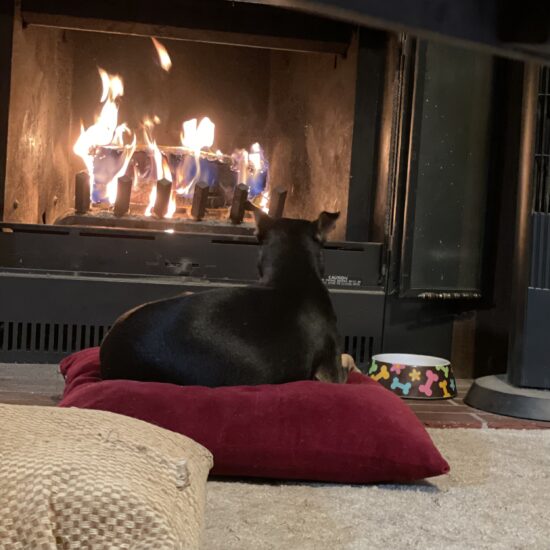
But Byng was different. She chose me. The Official Sweetie and I were at the shelter, and she was in a cage at the end of the row. I stuck my fingers through the bars to scritch her head, and she pressed up hard against the metal to make it as easy as possible for me. But I couldn’t stay all day there. When I stopped, she looked up at me and put her little paw through the bars, and put her hook through my heart. You can’t possibly be done. She was right. We brought her home.
At the shelter they called her Beyoncé, but that was not who this little girl was. We named her Lady Byng, after the hockey award for a player with high skill who doesn’t get penalties. NHL’s Miss Congeniality. Sometimes it seemed the name didn’t fit: while she was always graceful, and a fierce competitor, I think she might have spent some time in the penalty box for teaching puppies how things work in this league.
She chose me, and I was hers. And only hers. At the dog park, I was popular among the canine population. Always ready to play chase, or throw a ball, or just to give some good, solid, lovin’. A few other dogs would rush to greet me when we arrived. But if Byng felt like I might like another dog a little too much, intervention was called for. If I threw a ball and another dog chased it, she would head that dog off on their return path with teeth bared to prevent them from bringing the ball back so I could throw it again.
She had no patience for amateur dogs. Puppies and whatnot. At the park she was the schoolmarm and would brook no impertinence, no matter the size of the other dog. Great Dane? Sit your ass down, kid. Other people there would laugh and thank Lady Byng for educating their dogs. “Respect the lady, Diesel.”
At home, there were other dogs, and she was fine with them as long as she was closer to me than they were. I was hers, and she shared only grudgingly.
She had been living on the streets before she was captured and brought to the shelter. Having been hungry, she was world-class at figuring out how to get food. We started teaching her tricks, and she could jump, run, weave, or dance her way to a treat. Always at breakneck speed — and I mean that literally; we had to take “roll over” off the trick sheet because she would throw herself over so violently while keeping an eye on the reward that she would injure herself.
But the best times were the quiet ones, when my restless hands scritched her noggin, and her back, and then she would use her paw to guide my hand to her belly. The belly! Belly rubs were the best of all rubs. A good rubbin’ on a full belly was all she asked for out of life, and what she worked her whole life to achieve, and in return she gave joy and (in her mind) protection. She was Daddy’s Little Girl, no doubt about that. I thought sometimes I was going to rub the fur off her belly.
When I go to work tomorrow, I will not ask Lady Byng to take care of mommy, the way I have for the last twelve years.
I don’t want to talk here about the last weeks. There were ups and downs, and then it was over. I hope, but I can never know, that she knew it was me holding her and scritching her at the end. “She’s gone,” the vet said.
But she’s not gone. She is everywhere in this house, though that will slowly fade. Right now, reminders are everywhere. I cried when I poured out her water bowl this morning. But she won’t really be gone until I am gone, and all the other humans she has charmed are gone.
It is simpler when you are a dog; there is no urge to Be Remembered. No need to erect a monument with your name and a couple of numbers on it, to be sniffed at by other dogs. Our pack has done miles in the nearby cemetery, and while the humans read the monuments and consider their mortality, the canines just sniff, and march, and pee, and have a good ol’ time.
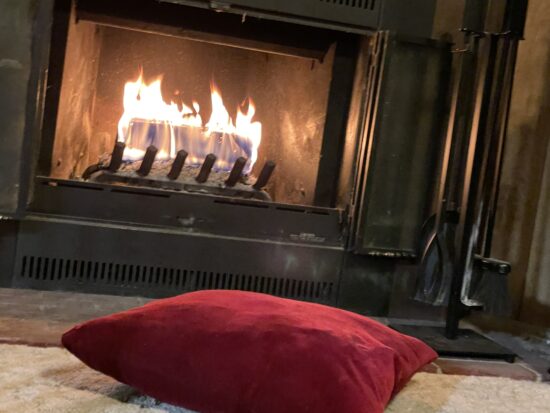
She would dance when we opened the fireplace, and the moment her red velvet pillow was ready she would settle in (as fast as possible) to quietly enjoy the radiant heat of the fire. I think, now, that wherever I see a hearth, I will also see a red velvet pillow.



